One of the most important (and costly) items you need for a backpacking adventure is a sleeping bag that’s warm, compact and light enough for you to carry on your travels.
Our buyer’s guide to the best backpacking sleeping bags includes the best down and synthetic fill bags to choose from when working out which brand, size, shape and insulation type is best for you.
As well as backpacking, all the bags in this ‘best backpacking sleeping bag’ list are also great for car camping and other overnight adventures.
RELATED BUYER’S GUIDES: Looking for our Best Double Sleeping Bags Buyer’s Guide for couples or friendly friends?
Best sleeping bags for backpacking
1. Sea to Summit Spark Ultralight 18F | Overall Best Sleeping Bag [Editor’s Choice]
- Choose if: Keeping backpack weight to a minimum is a high priority – this is one of the best sleeping bags if you want something lightweight, warm and highly packable.
- Down or Synthetic: Hydrophobic down
- Price: $480
- Weight: 1lb 8oz
- Sleeping bag temperature rating: 18F
- Dimensions: 72 x 61/53
- Other features: Available in a 5F option costing $550 and weighing 1lb 15oz, or lighter weight summer rated (40F and 28F) versions, all in both regular and long lengths.
This ultralight sleeping bag from Sea to Summit features two sliders on a full-length zipper, giving you options when it comes to ventilation and temperature control if you get too warm.
The 5F rated option would be a great option for colder weather camping or if you tend to feel the cold more than average and still want a lightweight bag to take backpacking.
If you want a summer sleeping bag for less than 1lb, the 40F rated version weighs 12lb.
Also Consider: Feathered Friends Swallow UL (men’s) or Egret UL (women’s) 20/30 down sleeping bags.
|
|
$578.00
2
new
from $578.00
|
See Deal |
|
|
$215.40
out of stock
|
See Deal |
2. REI Co-Op Magma 15 | RUNNER UP
- Choose if: You want a great balance of comfort, quality and price in a lightweight sleeping bag that weighs less than 2lb
- Down or Synthetic: 850-fill-power goose down
- Price: $390 (15) / $330 (30)
- Weight: 1lb 12.2oz
- Sleeping bag temperature rating (lower limit): 16F
- Comfort rating: 28F
- Dimensions: 72 x 63/57
- Other features: Available in Regular and Long, and Men’s & Women’s versions, and also available in a less expensive (less warm) Magma 30 version ($330).
This classic mummy sleeping bag from REI Co Op has a shaped toe box which gives you more foot and knee room while still keeping the bag’s overall volume low (and therefore more efficient to warm up).
The bag’s fill is water-resistant down that is RDS Certified, and it’s Bluesign approved.
3. Marmot Trestles Elite Eco 20 | Best budget backpacking sleeping bag
- Choose if: you’re on a budget or want a lightweight down-free option and appreciate the care that’s gone into creating a 100% recycled warm sleeping bag
- Down or Synthetic: Synthetic
- Price: $160
- Weight: 2lb 6oz
- Sleeping bag temperature rating (lower limit): 21.6F
- Dimensions: 72 x 60/56
- Other features: Available in men’s and women’s sizes, and regular, long and extra-wide options.
This is the best 3-season bag you’ll find for under $200 and there are many reasons why it’s such a popular choice.
At only 6oz over the 2lb mark, this synthetic fill sleeping bag is a great choice for a lightweight bag to take camping or backpacking, especially if you’d prefer to not have a down bag.
Plus, you get to feel extra good about taking this bag camping as it is the least expensive option on this list and made from 100% recycled materials.
|
|
$169.00
1
new
from $169.00
|
See Deal |
|
|
$132.26
out of stock
|
See Deal |
4. Enlightened Equipment Revelation Quilt | Best ultralight sleeping quilt
- Choose if: you want more versatility when it comes to sleeping systems and value having an ultra-lightweight quilt for backpacking or hammock camping
- Down or Synthetic: 850 fill power down
- Price: $270 for 30F Regular
- Weight: ~1lb 2oz
- Sleeping bag temperature rating: 30F (other options available)
- Dimensions: 72 x 54/40
- Other features: Choose from temperature ratings between 50F and 0F, and varying lengths and widths. Prices and weights range from $220 to $390 depending on the selected length & warmth rating.
When it comes to ultralight sleeping quilts for backpacking and camping, Enlighted Equipment are true experts. The Revelation Quilt is their original and bestselling design, made with ethically sourced down from an RDS certified supplier.
Not only is it available in a range of temperature ratings, lengths and widths, but if you have a specific requirement then you can also order a custom quilt.
Features include a zipper on the footbox and a shock cord that you can use to close the quilt up entirely on colder nights.
It also has elastic straps and clips on each side to attach to a sleeping pad and reduce movement.
Also consider the REI Co-op Magma Trail Quilt and the Sea to Summit Ember Ultralight Down Quilt.
5. Outdoor Vitals Summit 0 | Best Ultralight 4-Season Sleeing Bag
- Choose if: You want a premium ultralight backpacking bag capable of keeping you warm in all four seasons.
- Down or Synthetic: 800 Fill Power Hydrophobic Down
- Price: $430
- Weight: 2lb 3oz
- Sleeping bag temperature rating (lower limit): 0F
- Dimensions: 76 x 29.9
- Other features: The Summit range is also available in 30F, 15F and an even warmer -15F temperature rated version, and long (6ft 6) options.
Ultralight adventure gear experts Outdoor Vitals have used top of the line, ultralight, water-resistant materials for this bag’s components, from the ripstop shell fabric to the certified and RDS sourced 800 fill power down.
This sleeping bag features a center zip (unlike most mummy bags), the footbox has been anatomically tapered for added comfort, and it also comes with a roll-top dry bag and storage bag.
|
|
$337.97 | See Deal |
|
|
See Deal |
6. Feathered Friends Snowbunting & Murre EX 0 | Alternative 4-Season Sleeping Bag
- Choose if: You’re a cold sleeper or plan to go winter camping
- Down or Synthetic: Down
- Price: $670 (men’s) / $600 (women’s)
- Weight: 2lb 13oz (regular)
- Sleeping bag temperature rating: 0F
- Dimensions: 72 x 56/38
- Other features: Feathered Friends offers a whole range of bags designed for different weather conditions as well as long and short lengths, women’s-specific fits and colors including black, red and blue.
Feathered Friends is one of the best brands there is when it comes to down winter sleeping bags for all four seasons.
The Snowbunting EX 0 is one of their most popular 4-season bags and comes in regular and long-length options (6ft and 6ft 6, respectively).
For the women’s equivalent, check out the Murre EX 0 bag, which is less expensive at $600 and comes in shorter lengths and different widths throughout the length of the bag to reflect the needs of the brand’s female customers.
How to choose the best backpacking sleeping bag for you
When choosing between sleeping bags there are five main factors to consider, which influence the type of sleeping bag which would suit you the best.
Five key factors in choosing a bag
1. Warmth-to-weight ratio of the sleeping bag
Your sleeping bag needs to have enough insulation to keep you warm enough to sleep comfortably in the places you’ll be using it, but not be so heavy that it’s a bulky pain to carry when you’re hiking.
2. Choosing a down or synthetic bag
Whether the sleeping bag is filled with goose down or synthetic materials, it pays in many ways to buy a quality sleeping bag that contains materials that have been sourced ethically and responsibly.
3. The rest of your sleep system
Other elements of your sleep system will have an impact on how warm you are overnight. For example, choosing a sleeping pad with a suitable ‘R-rating’ will make a huge difference to your warmth and comfort levels.
If you need to buy a pad, our guide to backpacking sleeping pads will help you find the right one for you.
4. Backpacking sleeping bag shape
If you are particularly tall, large or short then it’s worth exploring longer, wider or shorter sleeping bag options to help ensure you’re comfortable in your bag.
You may also want to consider a sleeping quilt rather than a sleeping bag.
Also consider that a traditional ‘mummy’ bag will use less material and cut down on weight and the internal volume of your backpack, but will be more restrictive for your legs while sleeping.
5. Price compared to your budget
While we don’t believe price should be the number one consideration if you’re serious about buying a quality bag that you’ll enjoy using for many years, if you want an ultralight sleeping bag then can get very expensive, so a happy medium for most people is likely to be a balance between overall warmth, weight and price.
6. Are you a couple?
If you’re a couple and would prefer to generate even more warmth at night and save money by only having one sleeping bag between the two of you, consider getting one of these double sleeping bags instead.
Types of sleeping bag
Sleeping bags are broadly classified in two ways:
- The season they’re intended for use in: summer, 3-seasons or 4-seasons
- Whether they’re a down filled bag, or use synthetic insulation materials
Should you choose a summer, 3-season or 4-season bag?
Most sleeping bags for backpacking are classed as 3-season sleeping bags. That is, they are intended for use in most parts of the world for all seasons except winter.
You can also buy smaller ‘summer’ sleeping bags, and 4-season sleeping bags that have more insulation and are designed to be useable for camping in the cold of winter.
When choosing between sleeping bags, it’s important to understand the climate of the types of places you will be camping. In many places, it is not uncommon for the temperature at night to drop to, or down below, freezing.
This includes places at elevation and desert areas, which may be scorching hot during the day.
For this reason, most sleeping bags designed for summer temperatures are not particularly versatile or useful for many of the types of places you may be going backpacking.
3-season bags
As 3-season sleeping bags tend to indicate their suitability for night-time lows of around 20°F (-7 celsius), they’re better suited for these types of climates.
They’re generally the best sleeping bags for most people who will be backpacking or car camping in fairly mild weather that can drop close to freezing but without extreme cold or elevation to contend with.
With that said, an ultralight sleeping bag could be ideal for warmer climates and endeavors such as fastpacking where you’re only sleeping overnight for one night and want the lightest possible pack.
4-season bags
We’ve included a 4-season sleeping bag recommendation in this list. If winter backpacking is part of your plan and you need that added warmth to sleep comfortably on cold nights, then a 4-season bag is going to be the best sleeping bag option for you.
While super-warm 4-season winter sleeping bags may sound appealing for other seasons if you feel the cold more than others, it’s worth considering whether you really need one of these bags if you won’t be camping in winter, as they tend to be bulkier and more expensive than 3-season bags, so may not work for your budget or be something you want to carry on summer and fall backpacking trips.
There are other ways to help stay warm in your sleeping bag during these seasons, including ensuring you have a good, well-insulated sleeping pad, and are wearing the right clothes to sleep in.
Comfort ratings and limits explained
Once you’ve decided what season sleeping bag you’re going to get, look at the comfort ratings and compare these to the climate of the places you will be backpacking in.
You’re aiming to find a bag that has a comfort rating that goes down to a colder temperature than the typical overnight low temperature in your camping destination.
The ‘comfort rating’ is the lowest sleeping bag temperature rating at which it will keep the average ‘cold sleeper’ comfortable.
Without getting too detailed, this is often referred to as being the most important figure for women to consider, as women tend to sleep colder than men.
Sleeping bags also have a ‘limit’ rating, which is the lowest temperature at which the bag will keep a ‘warm sleeper’ comfortable – which therefore means that if you consider yourself to be a ‘cold sleeper’ then if you find yourself in temperatures closer to the ‘limit’ rating then you’re in for a cold and probably uncomfortable night!
We’ve quoted both limits for each of the bags on this list, but suggest that the comfort rating is given the most weight (pun intended) in your buying decision, as you can always open the bag to cool down if it gets too warm overnight.
It’s worth noting that these limits are only guides, and they also assume the sleeper is wearing long warm clothes and socks inside their bag, and are on a sleeping pad with an R-value of around 5.5, which is probably more than the R-value of most peoples’ sleeping pads, as the more popular pads for backpacking tend to range between 2 and 4.5.
Choosing between down and synthetic sleeping bags
Put simply, down sleeping bags tend to have a higher warmth-to-weight ratio, and pack down smaller in their stuff sack than sleeping bags that use synthetic insulation.
For this reason, if you’re looking for the smallest and lightest sleeping bags to choose from, then you’ll probably want to just look at down-filled bags.
That said, a down sleeping bag is generally more expensive than a synthetic bag, and it’s important to keep them dry as the feathers lose their loft and insulating properties if they get wet, so if weight and compression is less important than budget and performance in wetter (or more humid, warmer) climates then synthetic bags are still worth considering.
When choosing a quality, ethically-sourced down sleeping bag, look at the fill power (the higher the fill power, the better quality) and ensure that it has been made using traceable down and/or the manufacturer is certified as compliant with the Responsible Down Standards when it comes to the welfare of the geese whose down has been used to make the bag.
Some down bags are described as being filled with ‘hydrophobic’ down. This refers to a treatment that is applied to the down to make it absorb less water and dry more quickly if it does get wet.
Having a hydrophobic down sleeping bag can be helpful if you’ll be backpacking in more humid climates or wetter conditions.
If you need your sleeping bag to perform even when wet, and / or you are allergic to down, then one of the synthetic bags on this list is going to be a better choice than a down bag.
Lightweight sleeping bag weights
Generally, a ‘lightweight’ bag should weigh less than 2lb, and some closer to 1.5lb.
If you need the extra insulation for 4-season sleeping (temperatures less than 20F comfort rating) then expect an ultralight sleeping bag with a high warmth-to-weight ratio to weigh around 3lb, depending on the brand, insulation, shape and size bag.
It’s useful to consider not just the bag’s weight but also how small it packs down into a compression stuff sack, as this can make it easier to fit into smaller or heavily loaded backpacks.
Sleeping bag shapes and sizes
The most common and popular backpacking sleeping bags shapes are the traditional mummy bag shape, which taper towards the foot box area.
Mummy bags are designed this way to reduce volume inside the bag, which allows your body heat to warm it up, and for it to stay warm, quicker than a higher-volume bag.
Another benefit of mummy bags is that they use less material than a wider bag, which helps keep the weight down.
You can also find rectangular shape options, as well as bags that have been designed to offer a better fit for people who are particularly tall, broad or short.
The larger bags will weigh a few oz more than the stated ‘regular’ sleeping bag weights in this guide.
Shorter bags are often marketed as being women’s specific sleeping bags, and may have other features such as being wider in the hip area when they’re designed specifically as women’s versions.
These shorter women’s sleeping bag options use less material and therefore weigh slightly less than the ‘regular’ sized bags, so are good choices if you are smaller and looking to keep your pack weight down – as well as to have a more snug, heat-efficient sleeping system.
Sleeping bags vs quilts
Sleeping quilts are gaining popularity amongst backpackers and thru-hikers seeing to reduce bulk and weight in their pack. These quilts are also popular for people who enjoy camping in hammock tents.
If you tend to sleep very warm or find mummy bags very restrictive, then a quilt could be an option for you.
With that said, it’s worth also being mindful that you won’t get the same 360 degree insulation around your body when sleeping with a quilt, compared to a zipped up sleeping bag, and as quilts do not have a hood as most bags do, you may find you need to wear a warm hat to bed more often, to help retain warmth on cooler nights.
Other sleeping bag features
Compression sack – If your sleeping bag of choice comes with a basic stuff sack rather than a compression sack, it’s worth buying one of these to help pack it down small so it doesn’t take up too much space in your backpack.
Zipper length – some bags only zip part-way down (which can be restrictive), whereas others zip all the way down to the feet.
You may also be interested to know about sleeping bags that offer the ability to un-zip the feet area (such as the Sea to Summit Spark), in case you want to cool them off or have less restricted movement.
Durability – the thickness of the outer shell fabric is typically measured and referred to in denier.
If you’re tough on your gear, or camp with a boisterous dog, then you may get more life out of your sleeping bag (or at least have to repair it less frequently) if you choose one with a higher denier – although note that this will naturally make the bag heavier than other options.
Sleeping pad sleeve – some bags and quilts come with a built-in sleeve that you can slide a sleeping pad in, which helps prevent you from sliding off the pad (or it coming out from underneath you) in the middle of the night.
What brands make the best backpacking sleeping bags?
When it comes to the more technical, lightweight and packable backpacking sleeping bags, the best brands range from well-known outdoor names such as Marmot, Kelty, Big Agnes and REI to more specialist brands which specialize in sleeping bags and related outdoor gear such as Enlightened Equipment, Feathered Friends, Outdoor Vitals and Western Mountaineering.
How much should a backpacking sleeping bag cost?
Sleeping bags can range from under $200 to more than $500, depending on how warm and lightweight you need your bag to be.
Generally, the lighter the bag and the higher the temperature rating (the more insulation it provides) the more expensive it will be.
Choose a sleeping bag: Now you’ve read the buyer’s guide, click here to jump up to see our list of the best sleeping bags for backpacking.
As with all of our buyer’s guides, the backpacking sleeping bags selected for inclusion on this list are our Editor’s choice of the best out there, and we’ve intentionally kept this list short to focus on this selection of the best gear, rather than a list of 20 or 30 options which still leave you with too much choice!
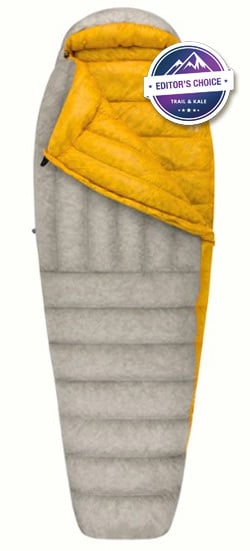
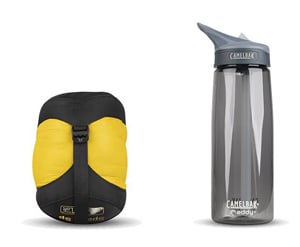
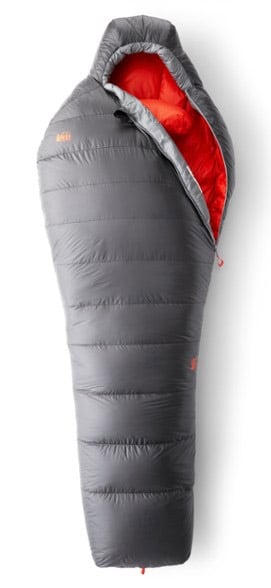
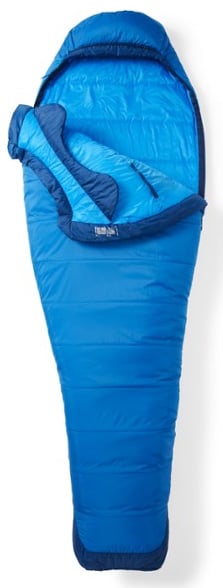

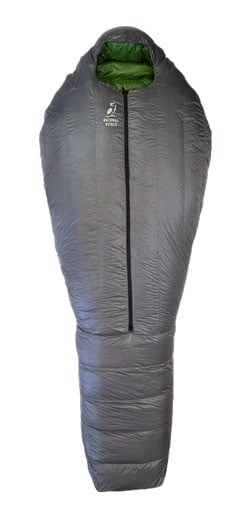
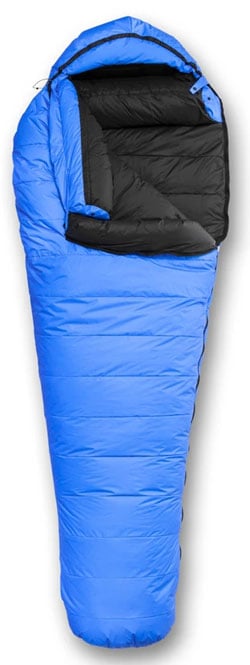









Hello
How to change top speed from 20 to 25 ?